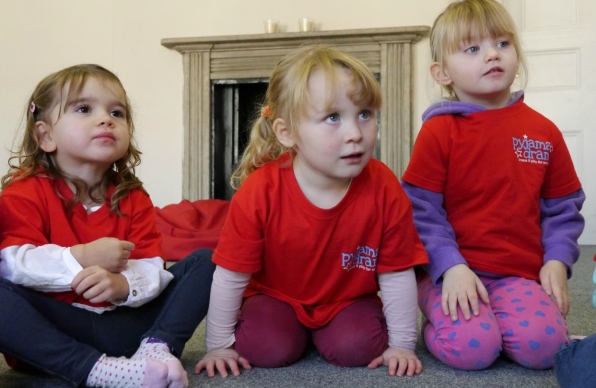3rd February 2014
Everyone knows someone who is great at telling stories. Maybe it’s Granddad who can keep the family entertained for hours at a time or your best friend who can turn a random event into a rip-roaring story that has you in fits of laughter. But how often do we think of ourselves as storytellers, even though something we do every day? From meeting a friend for coffee and telling her about our busy week to rushing home from work to tell our partners about our day, telling stories is something we instinctively do, and without even noticing.
This week, The Society for Storytelling runs their annual National Storytelling Week (1st – 8th Feb), designed to celebrate the ancient art of oral storytelling. Anyone can get involved by finding a local storyteller, booking a Pyjama Drama storytelling session for your nursery or school or joining in at home! Telling your child a story (rather than reading it) isn’t as hard as you might think; here are our top five tips for developing the art of ancient storytelling…
1. Bring a familiar story to life by using your child’s toys – teddy bears in a retelling of ‘Goldilocks and the Three Bears’ or a favourite doll as Rapunzel for example. Nursery rhymes can also be brought to life as stories using toys, dolls, or puppets.
2. Use props to enhance the drama or dramatic tension of a story. A large scarf makes the perfect hiding place for the troll in Three Billy Goats Gruff for example, and sound effects are a great way of bringing stories to life. What about using a drum (or a pan and wooden spoon?) to create the footsteps of a wicked witch, or a tambourine to indicate the arrival of a princess?
3. Make the story interactive. Children will stay more focused and engaged if they can be part of a story; encourage them to join in with the actions and facial expressions of the characters in the story, and mime simple actions such as opening a door, or eating a delicious meal.
4. Create a story together. Children have incredible imaginations and a wealth of their own ideas! Try telling a story together by using this simple structure:
- Start by giving the context of the story (a dog is feeling lonely and decides to set off on the adventure of a lifetime)
- Introduce a problem (all of a sudden there is a huge storm)
- Then ask your child what they think the dog does next (the dog steals an umbrella from an old lady sitting on a bench and runs away with it)
- Introduce a second, third and fourth problem which your child should be encouraged to resolve
5. Tell your own true story. Children love nothing better than to hear true stories about their parents and they especially love hearing about when their parents were children themselves. Give the story a simple title, ‘The day I got lost on a school trip,’ ‘The day I broke Grandma's favourite vase’, ‘When I got told off'’ or 'The best Christmas' and don’t worry if nothing much happens in your story, your child will simply delight in the fact that the story is about you!
You can find out more information about The Society for Storytelling here, but whatever stories you tell this week, try for a happy ending, after all, who doesn't love a happily ever after?


